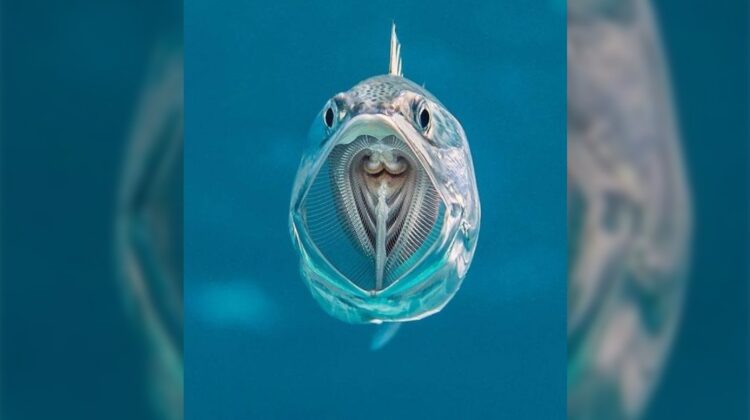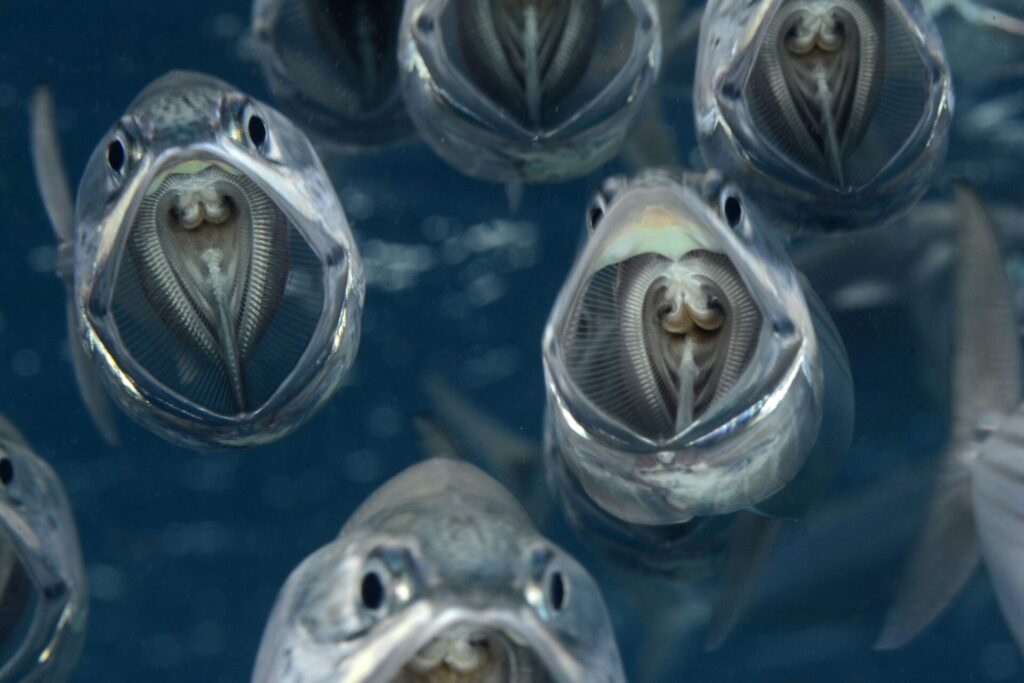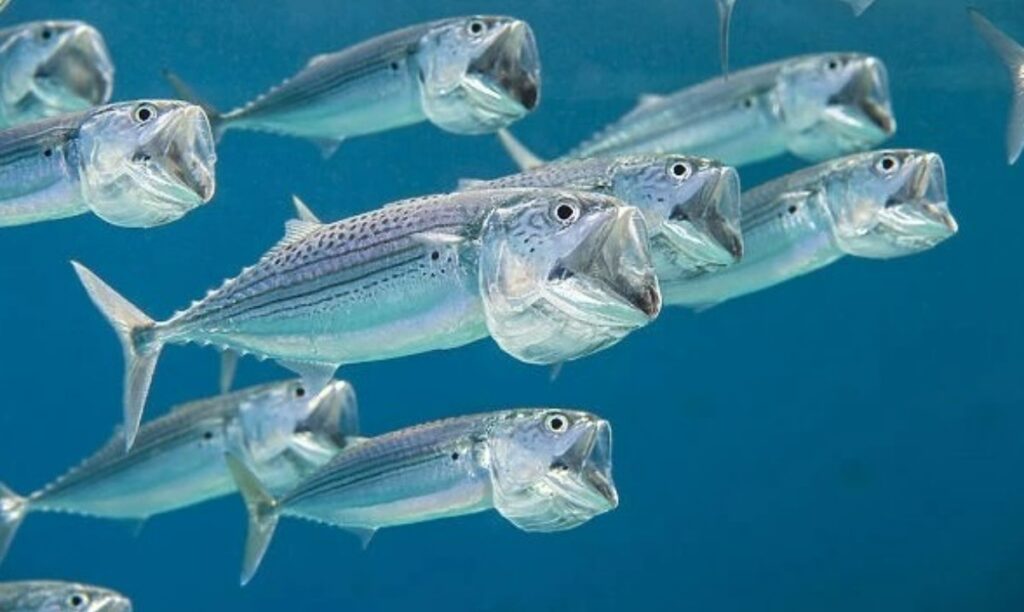
The image depicts a Striped Mackerel (Rastrelliger kanagurta) with its mouth wide open. But what’s happening inside? This seemingly simple act reveals a fascinating feeding strategy.

Filter Feeding Frenzy
The open maw isn’t for a single, large prey item. Instead, the Mackerel is filter feeding. As it swims, water rushes through its mouth, carrying tiny planktonic organisms called zooplankton. Specialised structures called gill rakers line the gills. These act like a sieve, trapping the zooplankton while allowing water to flow out.

Mackerel: Masters of Many Menus
Striped Mackerel are unique in their feeding habits. They’re not picky eaters! They can switch between filter feeding and actively hunting larger prey depending on what’s available. This adaptability helps them thrive in various environments.

Beyond the Bite: The Life of a Mackerel
The article describes the bigger picture of a Mackerel’s life. These fish are found in temperate and tropical waters, often sporting a striped back and a forked tail. Many Mackerel species travel in large schools, migrating for spawning and feeding. Smaller Mackerel become food for larger predators, including other Mackerel and even whales. Their tasty flesh, rich in omega-3 oils, also makes them a valuable target for commercial fishing.

So, next time you see a Mackerel, remember the busy world within. These fish are constantly on the move, filtering, feeding, and playing a vital role in the ocean’s ecosystem.

Leave a Reply